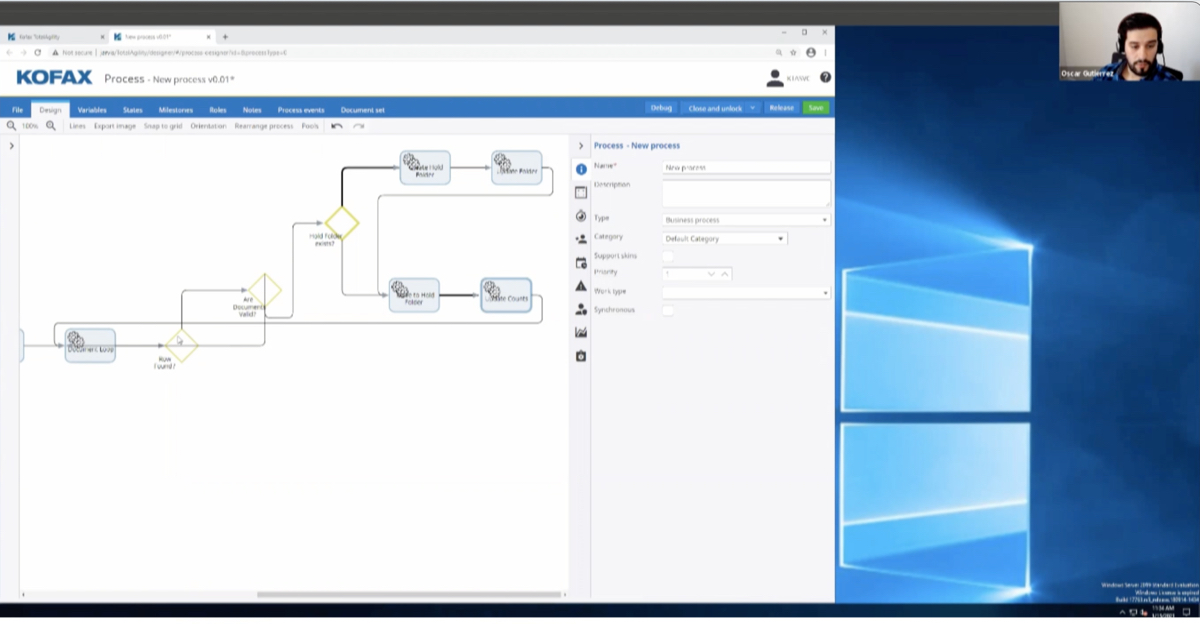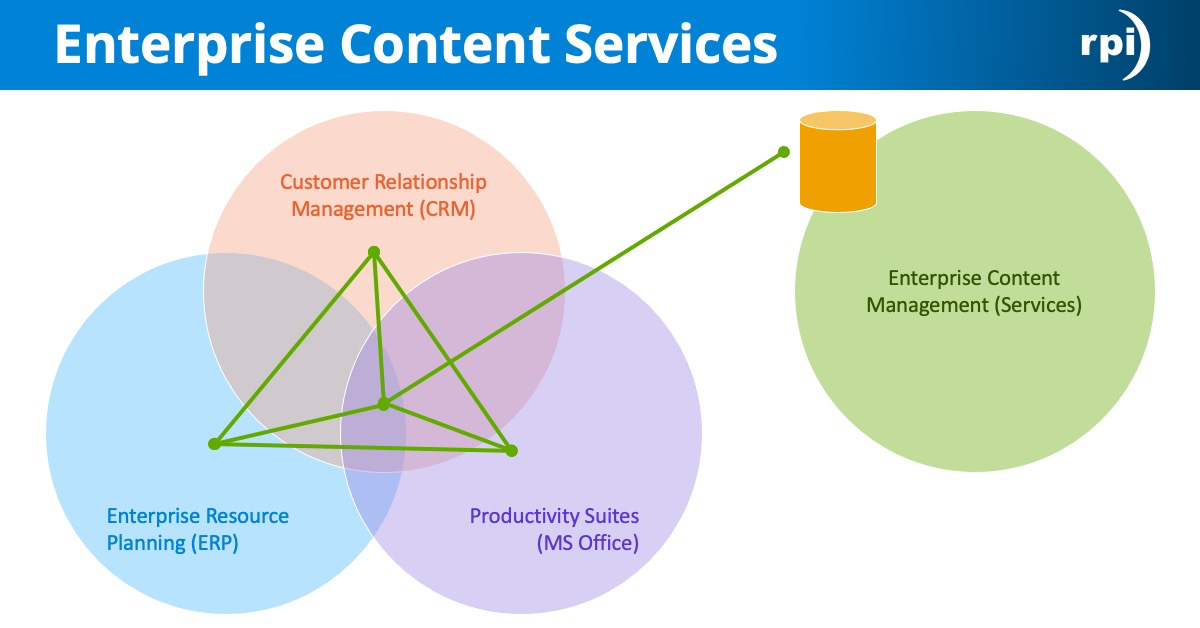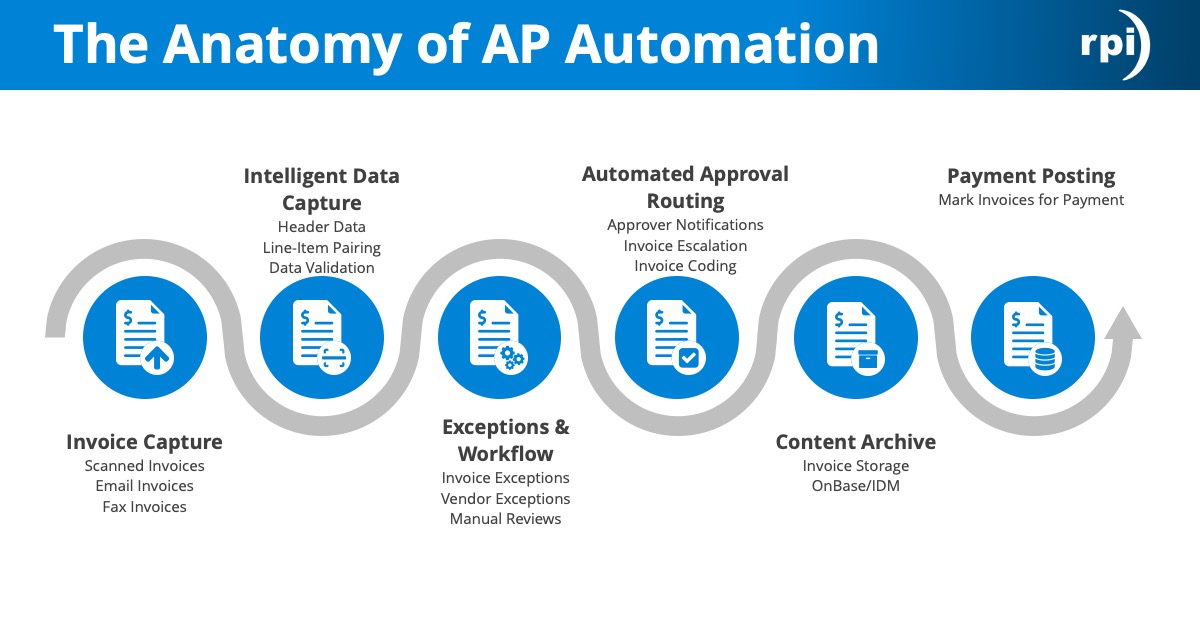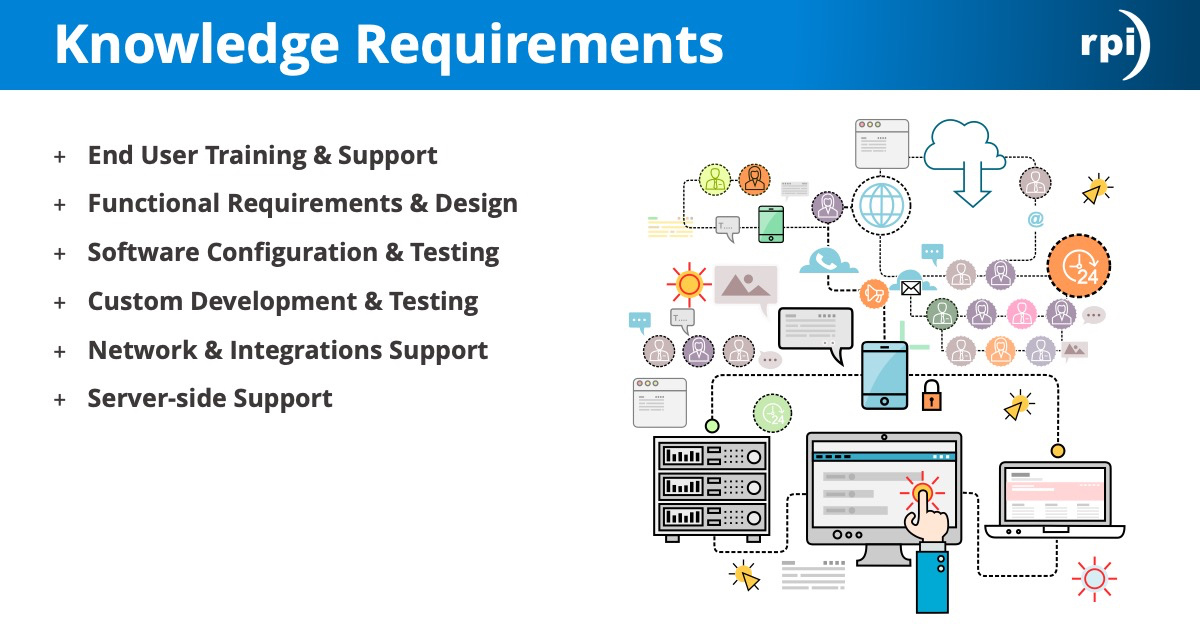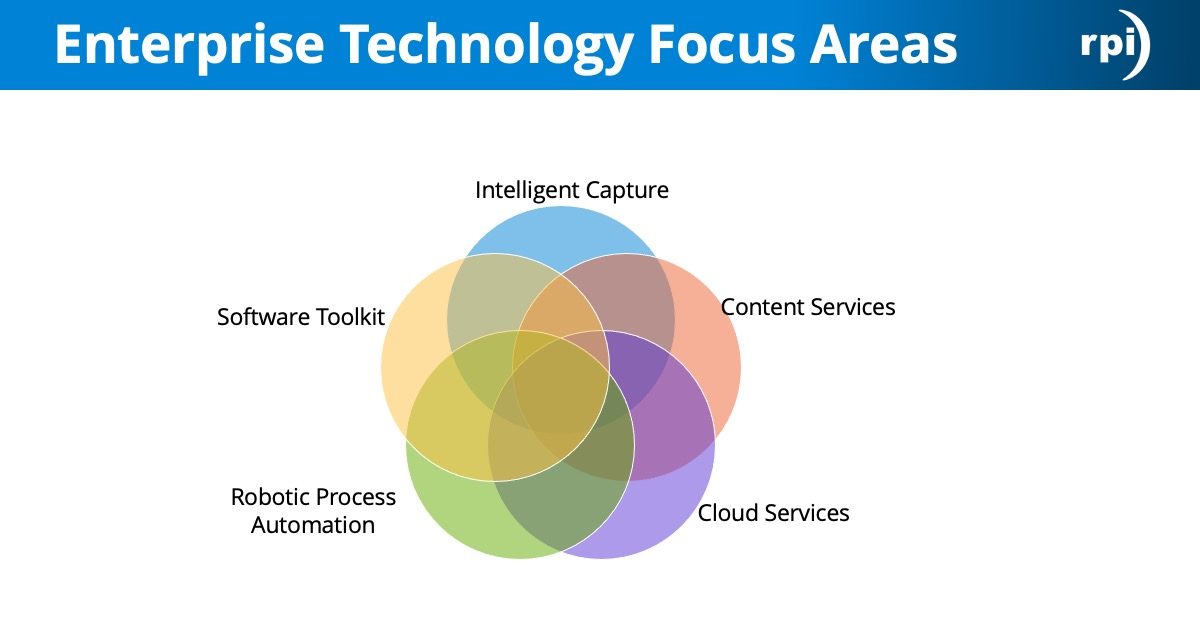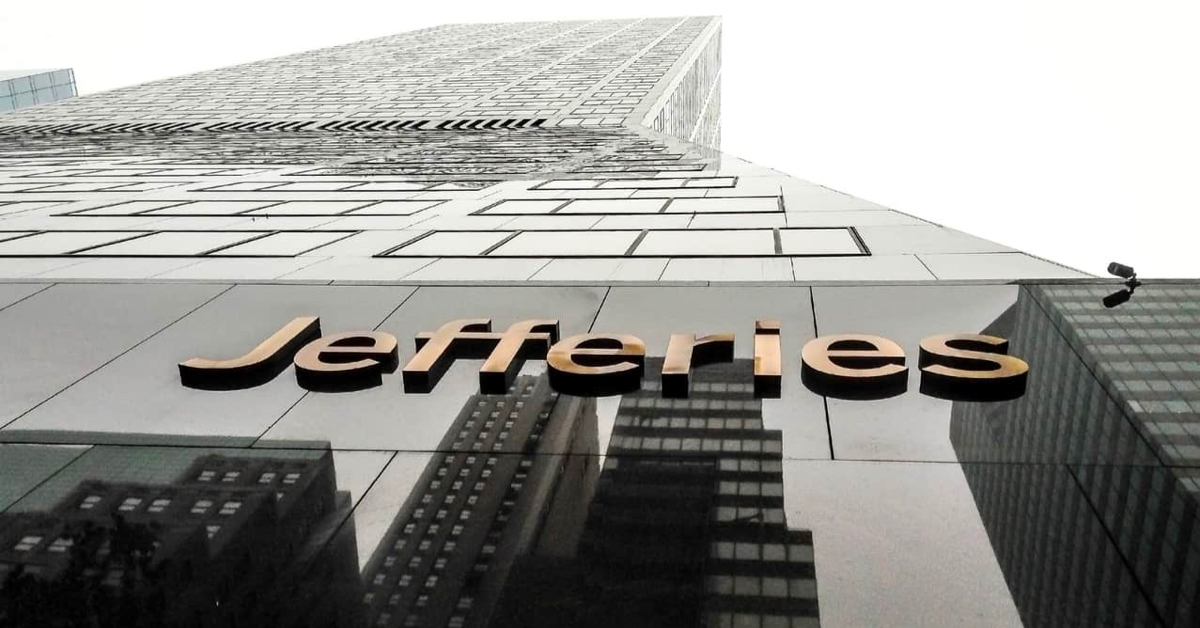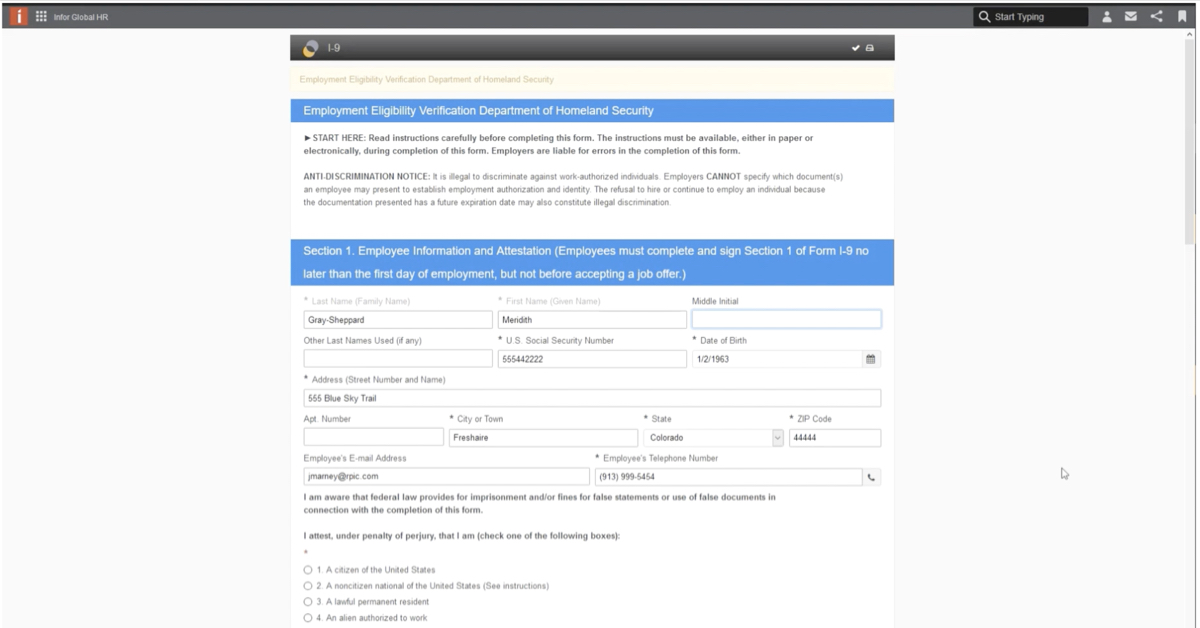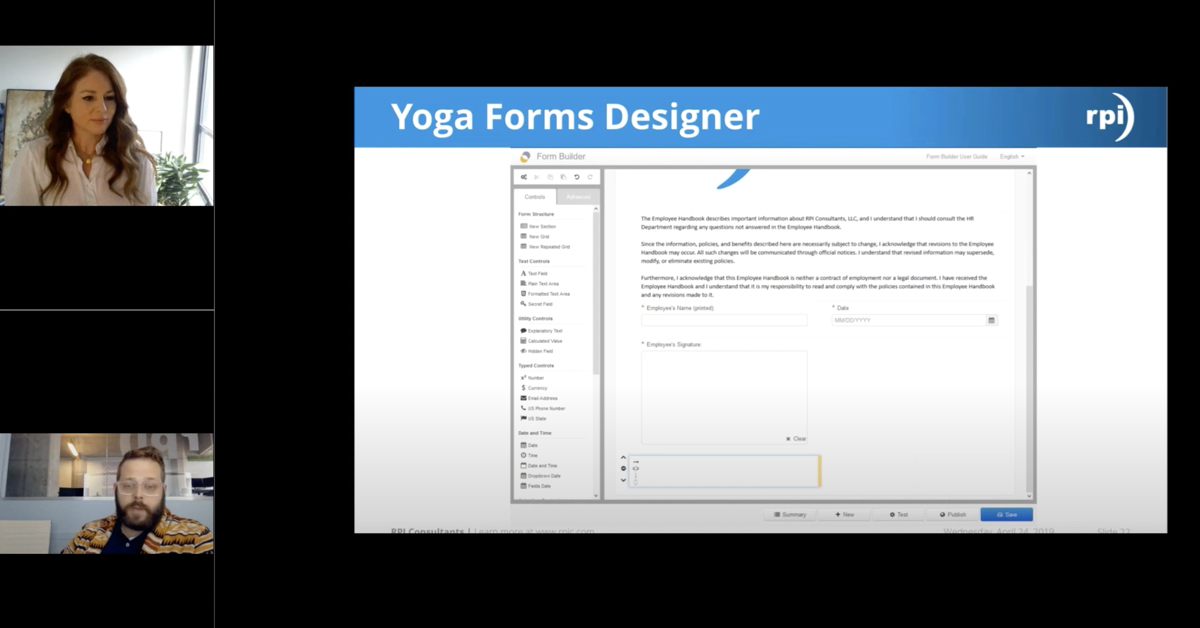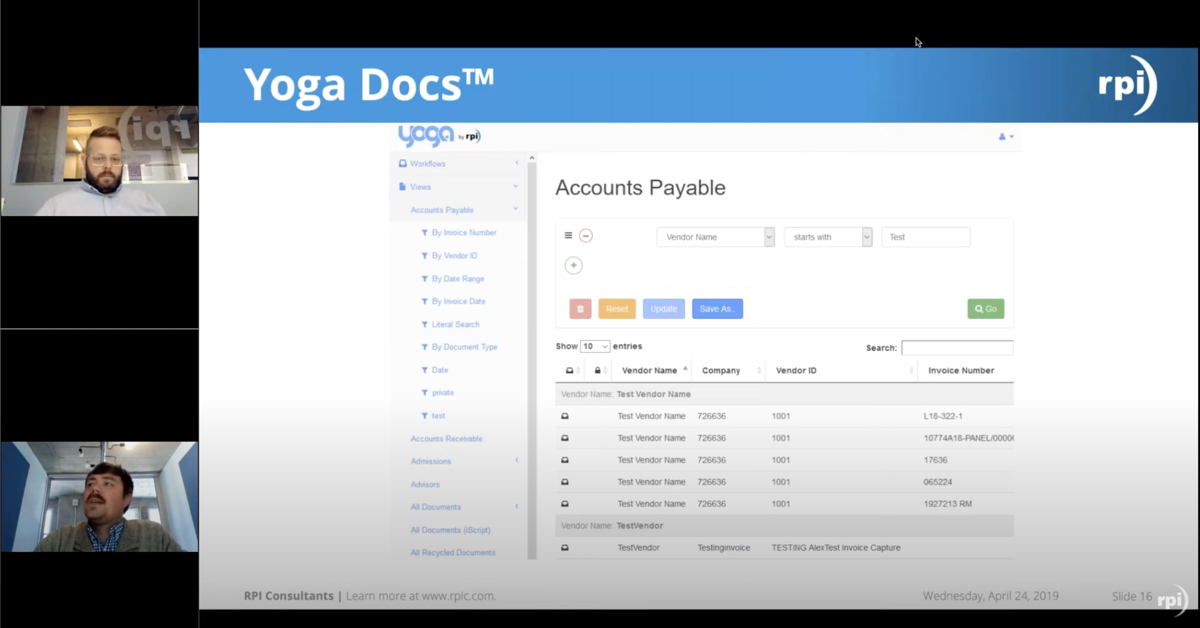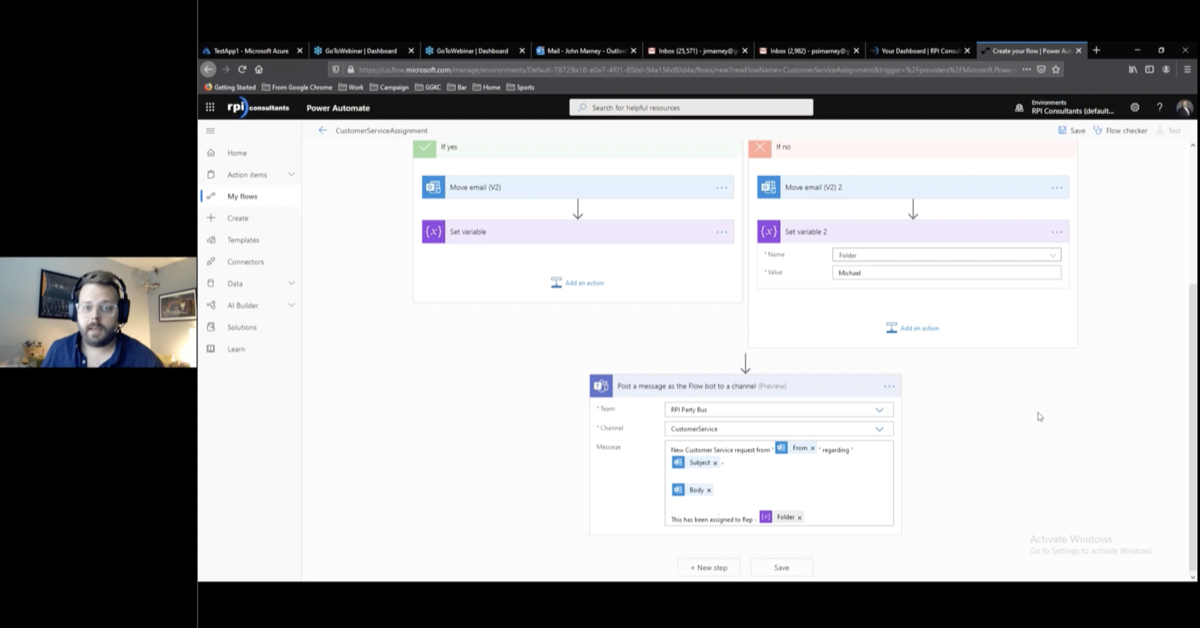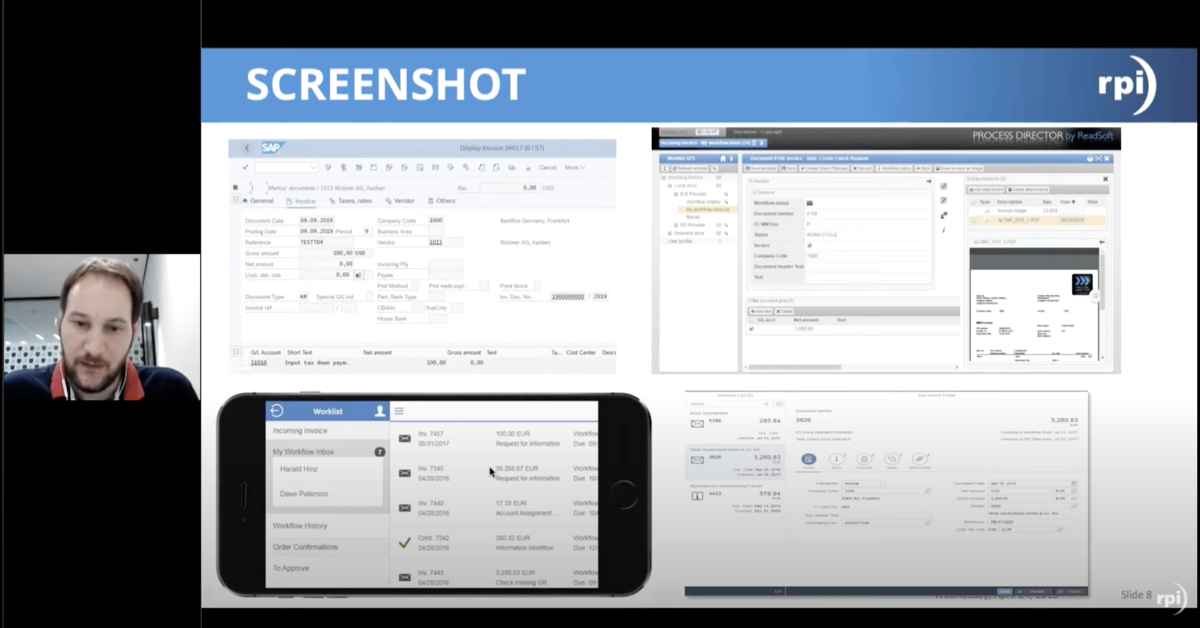John Marney:
My name is John Marney and I’m the Manager of Solution Delivery here for the Imaging practice here at RPI Consultants. This is Alex Lindsey, he is our Senior Solution Architect, and we’re going to be talking about a maybe little-known but often-considered module for Perceptive Content called Retention Policy Manager.
Couple record keeping or administrative items real quick. In your GoToWebinar, there’s a bar that runs down the middle that splits the video from the presentation. If you mouse over that you can drag that either way, so if really want to see more video and our beautiful faces you’re welcome to, but the presentation is really what you’re after.
Another item, the slides, or the slide deck, will be available and sent to you after this presentation, so don’t feel like you have to screenshot everything you see. As well, a high quality recording of this will be available on our YouTube here within the next week or two. We have a bunch of webinars coming up so the editing will take a little bit of time. Finally, you’re free to use the questions window in the GoToWebinar to ask questions. We have a moderator standing by to ask them during the presentation or after.
Let’s get this kicked off. A little bit about RPI first. We have been working Perceptive and Kofax products for around 16 years. There are roughly 15 members in this practice, in this team. However, the remainder of RPI Consultants focuses on Infor Lawson Consulting. That’s around 60 people. Our headquarters are currently in Baltimore, we have an office in Tampa, and of course the imaging team, that’s us, are based here in Kansas City.
What do we do? For Perceptive Content we do a lot of eForm and iScript development. That’s both for enhancing existing implementations or adding new implementations. That also includes whole workflow designs or redesigns, brand new processes that you want to implement. We do a lot of upgrades and health checks, as I’m sure many of you are familiar with right now as 6.7 going end of life very soon. Upgrades are becoming a very hot commodity.
We also do a lot with Kofax and Intelligent Capture and any other OCR platforms that will work with these products. We do a lot of migration system to system or from legacy systems. We also support clinical and HL7 implementations.
One quick plug, come see us at our booth at Inspire. It’s in Nashville this year, and we are platinum sponsors. We’d love to see you if you’re there. You can also schedule some time to meet with us to discuss whatever’s on your mind, anything about your system or not at all. To do so, go to rpic.com/inspire.
Okay. Launching into Retention Policy Manager, or RPM. What is Retention Policy Manager? Well, it is a software add-on to Perceptive Content. It’s one of those things that many people own but don’t always know how to configure or use, and it’s often asked about. Many people will go through their initial implementation, especially a big accounts payable implementation, and they know they need to consider retention, but it’s not really on the front of their mind. Three, four, five years down the road, we’re starting to see our usage of disk space start to balloon and we’re thinking, “How do I get rid of some of these things?”
It is for … Retention Policy Manager is exactly for that purpose. It’s for the systematic removal or transfer of documents. There are various removal methods or transfer methods that you don’t have to delete documents. You can choose through half the life cycle to move them to cheaper storage. It is separately licensed. It has its own agent. It’s typically installed on the primary content server, so wherever the Perceptive Content server is installed. It does show up in the management console, and that’s where the configuration is performed. It allows you to set up different life cycle phases for your documents.
Alex Lindsey:
There’s a lot of benefits to using Retention Policy Manager. The automated removal of the documents so you don’t have to go through and go through an elongated audit process that takes up a lot of your time and a lot of things that you have to do. The Retention Policy Manager also has oversight with approval, so you can, when documents are flagged to be removed from the system, you can set up an approval process to do that.
It’s primarily driven by the document type itself, so in accordance with your good corporate policy that you hopefully have set up. If not, then that’s something we can potentially work with you on. Basically, by document type is how we’re going to remove the documents from your system. It’s also easy to set up, and it kind of gets you into a legal compliance area where you can feel safe that these documents are being removed in accordance with your system requirements as well as your legal requirements to get the documents out of there.
A good example of this is your I9s. Employees’ I9s. A lot of corporate policies have, I9s can be removed from your system or can be deleted or shredded or whatever after three years after a termination date, so we set up a lot of those with human resources solutions where we’ll set up a policy to remove documents based on that criteria.
John Marney:
There’s just a few requirements for RPM, or Retention Policy Manager. It is licensed, so if you don’t own it, you’ll need it, and I believe there’s two licenses. There’s one for the agent, and then the designer is a seat license. Typically, you only need one.
Of course, the software you’ll need is Perceptive Content. It does work on older versions, so I believe that this was rolled out in 6.6. If any of you are on 6.6, we need to have a separate conversation. It will virtually work the same through all versions that it’s installed on.
Yeah, so we’re going to go ahead and what we’re going to do is walk through a simple retention policy setup, and I think Alex is going to get us started with that.
Alex Lindsey:
Yep. You’ll navigate to your management console if you’re an administrator, and you’ll notice here that we have the actual retention, so if you’re not sure if you own it or not, this is a really good place to check to see if you have a nice little blue shield there that you can kind of click on. It kind of gives you some options here for holds, physical locations, sets, things like that, that you kind of define in some of the more advanced policies.
What we’re going to do today is set up a simple policy to remove invoices from your system. You would basically click the policies here, and you would click new, and when you click new it’s going to prompt you to basically come over here and fill out this lovely box to describe what you’re going to be basically removing, what the policy is for.
John Marney:
Right, and you want to make sure that it’s easy to identify what you’re creating a policy for, of course. We called this Invoices, but maybe you want to call this Invoices Deleted Seven Years, or something like that. Once you’ve named it and filled out a description, you want to click okay, and it will open up what’s called the Retention Policy Designer.
Alex Lindsey:
Yep, so this Retention Policy Designer, it’ll pop up and you’ll kind of see it and you’ll kind of notice here in this box, this is kind of similar to setting up a document view, so the first thing you’ll want to kind of go over is the event. The event, similar to document view, is where you can choose some criteria to basically filter the documents that you’re actually going to be classifying and putting under that policy.
John Marney:
You want to be sure not to use too many filters.
Alex Lindsey:
Yep, and that’s a good point because the Retention Policy Manager, a lot of this runs on the back end of the system within Perceptive Content. What you don’t know is there’s a hidden workflow out there that all of this runs on, and the more criteria you add to it, the more defined it gets, the slower that process can run. Ultimately, it’s driven by document type, but you can add some classification here, but we would just caution to not use too many criteria, just so we don’t impact any kind of performance or things like that.
John Marney:
You want to be sure that you’re not being too specific and accidentally missing some documents that actually you want to hit. Sounds like before we continue we’ve got a relevant question, so let’s go ahead and do that.
Speaker 3:
Yeah, so the question we have is around whether or not you can filter by custom property.
John Marney:
Alex, do you know for sure?
Alex Lindsey:
Filter here? Yes, we should be able to filter by custom property. Again, we don’t want to get crazy with it. Again, we probably want to have a conversation about what specifically that custom property is, but we should be able to do it here.
John Marney:
What I’ll mention is, this question may stem from the idea that we want to use custom properties to identify the time period for these documents. We’re going to show you in a later slide, the next one, I believe, that actually we can use custom properties to define the time period. This is just the search for basically filtering the total number, or the criteria for what documents we want to select.
We can certainly … We’ve got this on our demonstration system, so we can certainly double check that we can use custom properties here. I don’t know why you wouldn’t be able to, and we can get back to you. Great question, though.
We’re going to move on to time period. This is where you specify the time period in which you want to perform or trigger this action to occur. We haven’t actually specified what action we want yet. It’s going to be document deletion. Spoiler. This is the time period in which we want to do that. There are a few different items in the drop-down that specify different kinds of time periods. The first one is events. We can trigger it off of certain specified events. The next one is immediate, which is sort of self-explanatory, so we want the action to happen immediately. The next one is standard date, so that’s basically choosing a specific calendar date that you want something to occur on. Typically, maybe a year end, so you want something to happen on January 1st. Then, finally, system, where you can use things like custom properties, the document created date, things like that.
The really most often is going to be use a custom property, such as invoice date, in an accounts payable scenario, or termination or hire date in a human resources scenario.
Alex Lindsey:
The next part of this, and this is kind of an optional thing. You can do it or you don’t have to do it. I’ve seen it probably about 50/50, where customers will want to have some kind of oversight approval oversight on how the documents are being destroyed, or just someone to check them before they’re actually removed from the system.
Here you can actually assign users or groups, and you can add multiple levels there to basically give them notification that these documents are for policy. If you’re familiar with tasks, this is pretty much how it’s going to be done. They’re going to get a task assigned to them to review these documents prior to their destruction or removal off of the system, and then they’ll approve or reject based on that, and then it will basically move forward in the process. Again, it’s not something you have to do. A lot of customers, for instance, for invoices, and by a particular policy, invoices, it’s kind of a fast and loose, let’s just get them out of the system after three, five, seven years, something like that.
John Marney:
Alex, do you have to define approvers?
Alex Lindsey: Yes. You have to assign a specific group or a user. You can’t just add a level and then it goes nowhere. Someone has to see it before you do it, but, again, it’s optional. You don’t have to do an approver, but if you do add a level here, you should add a person.
John Marney:
Awesome. Thank you. Before we move into this one, because this is going to be a little bit of a lengthy discussion, I think we have another question.
Speaker 3:
This question is, can Retention Policy Manager be used within iScript and a CSV file containing a list of documents to be removed?
John Marney:
That’s a great question. For anybody who doesn’t have Retention Policy Manager, you can handle retention through iScript, however, iScript does not really have any specific interface with the RPM module, which is what we’re discussing right now. There are benefits to using that RPM module over just an iScript. The ability to manage the various phases through the interface, especially if you want to do multiple phases. If you want to just delete documents, maybe it doesn’t matter that much, but being able to do a transfer to offsite storage or something like that is something, and then delete years later, that’s something that’s best handled through something like this.
Also, the ability to do approvers, specify your time period, really just create an auditable, really intelligent way to manage all of your documents is what this module’s for.
Alex Lindsey:
Yeah, and this product is DOD certified, so it’s built to be one of those big compliance checklist items for software. That’s a good point when you talk about the removal so … Thank you for the question, by the way. The last part of setting up this … One of the last parts of setting up this policy is choosing your action. I would say the most often used is destruction. You don’t need the documents anymore, so destroy them. But there’s a few other options that you may not know about. A session is kind of a unique one where you can do a couple different things where you can potentially remove the image from the document itself and just retain the document with the metadata. Destruction obviously destroys the document. Next phase is, basically, we can do multi-phase policies where it can go through an approver and then they can sit somewhere else in a separate phase and basically move on to different phases throughout the policy.
The other one is the offline transfer. This one we see a decent amount as well, so if you don’t want to actually destroy that copy of the document itself, you can transfer those off to another location, to a hard drive somewhere or a shared drive somewhere, just so you can have those for your records if you ever need to pull those back in.
Online transfer is basically where we’re going to take the documents, where they reside in your OSM set within Perceptive Content, in the database there, and move them over to a separate OSM set. Pretty straightforward there, too.
Permanence is essentially where we’re going to just say, we’ve got these. We’re good with them. We’re just going to leave them in the system permanently.
John Marney: Again, most of these phases, for example, the next phase and permanent, it’s mostly to create an audit trail on these documents, that they have been reviewed. Maybe we do want to keep them, or maybe we do want to destroy them. Again, the most typical setup is going to be, like Alex said, just a straight destruction single phase, but the next most common is probably a offline transfer to a cheaper archival storage, followed up by destruction at some time later.
Alex Lindsey:
One more point on that, for the online transfer, we want to make sure that you have the OSM set up before you actually move that over, so if you want to go with that option, make sure that whoever you’re working with sets up that OSM first, and then you can do that online transfer.
John Marney:
You typically want to do an online transfer before you do an offline transfer, because what that does is allows you to take those files and physically segregate them on the server before you actually move them off the server downstream.
Alex Lindsey:
Clear as mud.
John Marney:
Yes. This is something that will take some discussion internally, and make sure you want to identify your policies before you set it up.
Most important, of course, how do we get this thing turned on? Once you’ve defined your event, your time period, your potential approvers, and your action, we actually have to go ahead and assign this policy to specific document types. You might be thinking, well, we already identified the event with the filter criteria. Well, that defines criteria on top of this document type, so ultimately, your policies are defined by document type or types.
To do that, you’ll go to the file menu, go to assign. Then it’ll pop up a new window, which should look pretty familiar. It’s a list of your document types. You can select one or more and add them to the list on the bottom, and you click okay. Finally, to activate the policy, you would go to file menu and activate. However, you need to really be sure that it is set up the way you want. Once you activate it, it is going to go through the system, your retention policy agent, or your retention agent, is going to go through the system and identify what documents now meet that criteria. As soon as the document is put under that criteria, any one single document, the retention policy becomes a lot harder to edit. Those documents now have to be handled before you can then go back and edit the policy, although you can deactivate it if you need to.
Okay, so back on your management console screen, you should now see that policy showing up activated, if you activated it, under the retention policy, or the retention tab.
Alex Lindsey:
That’s a good run though of just basically how to set up a very standard retention policy for your documents, to just kind of get them out of the system. There’s a lot of other things you can do with this tool, a lot of stuff has been built into it to be a little bit more flexible, provide a little bit more audit capabilities, and things like that. The multi-phase is ones that we’ve done before where we essentially set up a phase for the approvers and then a holding place with a protected phase, and with protected phases, documents can’t be edited at all at any point when it’s in that protected phase, so there’s a lot of unique things you could do there.
With Business Insight, if you own the Business Insight reporting tool for Perceptive Content, there is a destruction report you can use that kind of gives you a snapshot of the documents destroyed. It is important to note, though, that there’s not a lot of great, specific information on that report that ties to those documents. That’s something we can obviously customize. We’ve done it before where we essentially add metadata to that report so it becomes a little bit more pertinent to what you guys are looking for.
Also, the creative space saving. A session, which we mentioned earlier … If you want to retain those documents but you still need space, you can actually, with the session action, you could actually remove the document image itself and that will essentially create some space on your server there, and you can retain the document itself, Perceptive Content document itself, with that metadata. A lot of times, as you’re going through this, maybe you don’t have a corporate policy in place to remove certain documents, or maybe you do and then you find out that the documents that you’re storing in Perceptive Content right now or Imagenow, doesn’t have the pertinent information that you need. It’s very easy for us to do an iScript or build an iScript for you guys to basically pull that information from specific data sources or ERPs. A common one is HR solutions. Maybe you implement an HR solution but you aren’t capturing termination date or hire date or something like that. It’s very easy to go and hit a server somewhere or hit a flat file and get that information onto your documents so that then you can put them under policy.
John Marney:
Right, and maybe even on top of that, when it was implemented, maybe the termination date was applied to an employee folder instead of the employee document, and for us to really key on that date for retention policy, we need it on the document, so we can easily write an iScript to just map it over.
Okay. I’m going to get through this one slide and then we’re going to do some questions. Just wanted to let you know, we have one more webinar this week for our team. It’s a 2:00 eastern this afternoon. It’s Perceptive Content Tips and Tricks that we’re going to cover, sort of a very wide breadth of subjects there, and you can go to our website at rpic.com/ists-webinars to register for that one. We’re also doing a large number of Infor Lawson webinars next week. Unfortunately, you won’t see me again there, but to register for those or just see what the content is, you can go to rpic.com/webinars.
Okay. Let’s go for our questions.
Speaker 3:
Yeah, and while we answer this question, definitely please feel free to ask questions in the questions window, and we will get them answered to the best of our ability.
One of the first questions we have, we were told that in 7.1, that the RPM workflow could be scheduled to run at night rather than always running in the background so as not to deprecate any other workflow use … Excuse me. So as not to deprecate any other workflow use during the day. Is that true?
Alex Lindsey:
There’s actually an .ini file. The RPI … Retention policy … In-server RPM or something like that.
John Marney:
In-server retention. Yeah. There’s an .ini file.
Alex Lindsey:
There’s an .ini file where you can kind of configure how those back-end processes are run. I couldn’t tell you specifically what that setting is, but I’m pretty sure it’s in there, in the .ini file to control when and how often that actual back-end process runs, because you’re right. It’s not something you can do from the policy itself. There’s no scheduled thing that happens within that designer, so it’s kind of something that has to happen in that .ini file.
John Marney:
Yeah, absolutely. If you were told that, I assume that that’s true. We can definitely get back to you with a firmer answer, but, like Alex said, it’s definitely not something that’s configured through the console, so the .ini is where we would identify that time frame.
Speaker 3:
Awesome. The next question is, if we’re interested in Retention Policy Manager but it turns out that we don’t actually own it, is that something that we can reach out RPI for to assist?
John Marney:
Absolutely. Yeah. You see a couple email addresses on this screen. Just shoot an email to either of us, and we’ll get you in touch with the right resources to get this installed, purchased if you don’t have it, and what have you. Yeah, we can absolutely help you with that.
Speaker 3:
We have one from Greg Pollard.
Speaker 4:
After we do set up a policy, before we activate it, have you thought of any creative solutions to run it in your production environment but really kind of just see what it would do? Whether that’s an approval process that doesn’t happen or whether that’s marking it a certain status and then marking it back?
John Marney:
Yeah. That’s a very good question. Probably what you’d want to do, if you want to do it in production but you don’t want anything bad to happen, you would just want to set up a single-phase retention policy that basically just ends with next step, or something that is inconsequential. There’s a couple different options there. That would allow you to explore exactly what that interface looks like and what approvals will look like.
You could also use that filter criteria to narrow it down to a very specific subset of documents to make sure that you really understand what’s happening, so maybe a specific invoice number, even.
Speaker 4:
There might be a creative way to also get a report of if I did actually activate this with an action. These 12,002 documents would…
John Marney:
Right. We can always build something, an iScript or potentially a view just to see what exactly the total documents and what documents meet that criteria. That’s definitely doable.
Alex Lindsey:
It’s important to know, too, and we didn’t highlight this here, but you can see from certain document views, documents that are under policy, essentially. That is one of the columns that you can do on your documents filters, essentially, when you’re looking at a document view, and it’ll show you a flag of documents that are actually under the policy, so if you wanted to do a nice, confined test, that’s a good way to do it, is just potentially set up a view for that.
John Marney:
Well, I think that’s all our questions for now. Of course, if you have any more or any concerns or anything you want to follow up on, like I said, just email either of us here or any other contact you have with RPI. Of course, we are always looking for ideas for anything that you want to know more about around the Perceptive or Kofax ecosphere. If you have any ideas, also, about something you want to see, also feel free to shoot us an email. No further questions? Maybe?
Speaker 3:
No, we don’t have any further questions, but, as John just mentioned, if there’s any future webinars you’d like to see, definitely just type those into that questions panel. We’ll leave open for a minute or so. If you just want to ahead and get those in, and we will get that on the list for a future webinar.
John Marney:
Yep. We’re expecting the next set to be roughly three months from now. Thank you for joining us, and again, we have one more this afternoon, so we hope to see you there.
Alex Lindsey:
Thank you.[/vc_column_text][/vc_column][/vc_row]




